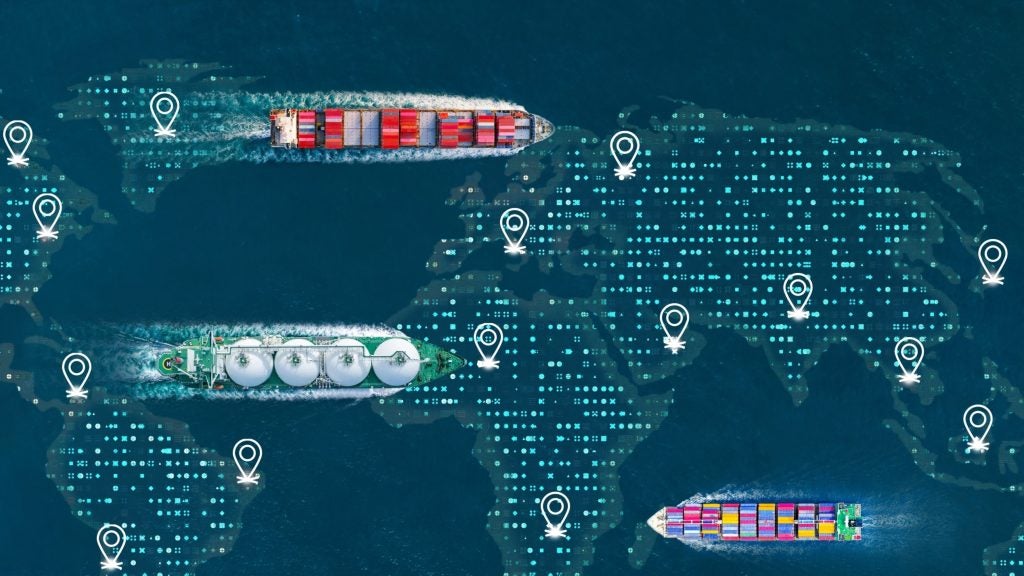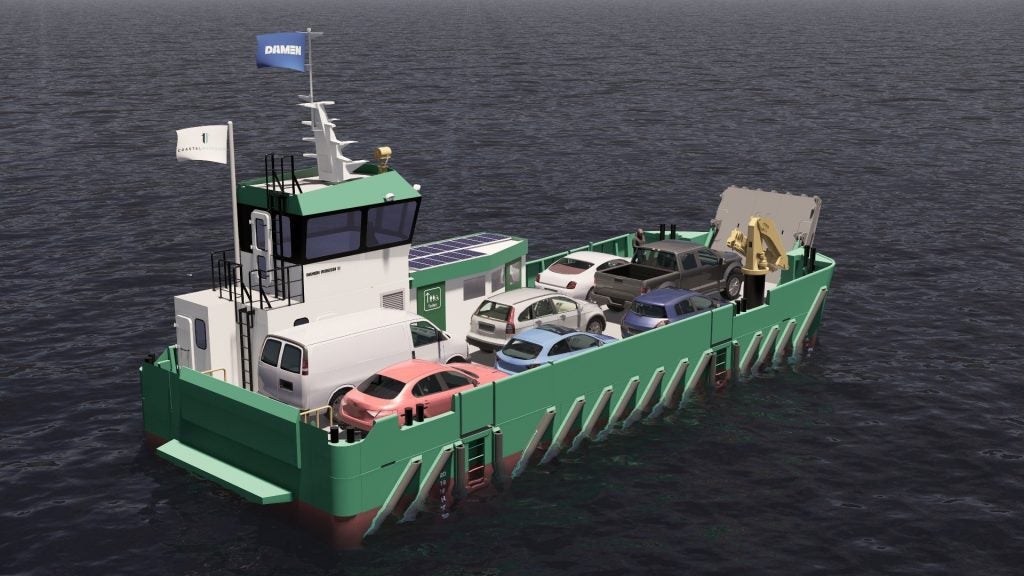
Troubled telecommunications giant BlackBerry has launched a cloud-based Internet of Things (IoT) platform aimed at the lucrative freight shipping market. Julian Turner analyses the new technology and its potential to enhance visibility across the increasingly complex maritime supply chain.
With its share of the global smartphone market languishing at less than 1%, BlackBerry has spent the past year taking a long hard look at business fundamentals under the stewardship of CEO John Chen.
Diversification or decline was the stark choice facing the Canadian company and Chen has taken up the challenge, refocusing resources on software development and remodelling the former mobile giant as a specialist provider of network software and security for governments and corporations.
Central to BlackBerry’s long-term growth strategy is the Internet of Things (IoT), the term used to describe technology that connects objects to wireless networks and allows data to be transferred without the need for human-to-human or human-to-computer interaction.
According to a new Trend Report published in April by DHL and Cisco Consulting Services, the IoT has the potential to deliver a $1.9 trillion boost to supply chain and logistics operations over the next decade.
BlackBerry wants a slice of that market and used the Consumer Electronics Show in Las Vegas in January to launch its new cloud-based IoT platform. Initially designed to target the automotive and asset-tracking industries, the solution has multiple applications for the container shipping sector.
How well do you really know your competitors?
Access the most comprehensive Company Profiles on the market, powered by GlobalData. Save hours of research. Gain competitive edge.

Thank you!
Your download email will arrive shortly
Not ready to buy yet? Download a free sample
We are confident about the unique quality of our Company Profiles. However, we want you to make the most beneficial decision for your business, so we offer a free sample that you can download by submitting the below form
By GlobalData“The BlackBerry IoT Platform blends the technologies that have enabled BlackBerry to become a leader in both the mobile data security and embedded systems industries,” stated Matt Hoffman, vice-president of strategy and marketing at BlackBerry Technology Solutions.
Propelled by a mix of wind and LNG, the Vindskip is a new vessel concept already making waves across the shipping industry.
“By combining the BlackBerry global network and device lifecycle management proficiency with the embedded software experience of QNX, we have built a modular, cloud-based platform that gives customers the chance to build IoT applications in a secure, efficient and scalable way.”
Ahead in the cloud: the BlackBerry IoT platform explained
The DHL/Cisco Trend Report estimates that there will be 50 billion devices connected to the internet by 2020, compared to 15 billion today, but who will be given permission to see and use this data?
The BlackBerry IoT Platform is designed to give users that control with a cloud-based solution that lets them build and manage IoT applications and devices in a secure, efficient, and scalable way.
Comprising device software, cloud services and data, the platform combines technology from QNX Software Systems – whose software powers embedded systems in cars, industrial applications and medical devices – with secure network infrastructure and device lifecycle management software.
Cloud services are hosted within the BlackBerry infrastructure – which offers physical security and 24/7 monitoring for threat detection and threat response – and is comprised of a platform foundation with core messaging services, business logic and application modules for developer connectivity.
The foundation of the software is a scalable messaging system for instantaneous data indexing and storage. The system serves as the message ‘bus’ for additional platform modules, delivering reusable services including instantaneous data indexing and storage, and integrated analytics for visualisation.
Business logic is where information from IoT objects or devices is understood and actioned. Cloud processing allows memory-intensive tasks to be offloaded and scheduled in the platform foundation rather than on a specific device, and tasks can also be processed locally, providing autonomy.
Finally, the BlackBerry IoT platform has a flexible structure of independent application modules that work in tandem with the platform foundation to provide pre-integrated, tailored tools to simplify and enable the rapid implementation of IoT solutions. Using these pre-built components and by leveraging only the components needed, an organisation can efficiently customise an IoT solution.
Sea change: maritime applications for cloud-based technology
So, how will this impressive functionality help to increase visibility across the freight shipping supply chain as shipping volumes increase and pressure on the commercial maritime industry intensifies?
The sector is already responsible for nearly 90% of world trade and marine traffic through strategic coastal hubs is expected to double in the next 15 to 20 years. Commercial container ships and bulk carriers are also getting larger, forcing port operators to increase both capacity and efficiency.
BlackBerry plans to provide both hardware and software that will enable cargo to be tracked and monitored using cloud-based communications boxes built into containers, consisting of a cellular radio, Wi-Fi connectivity, a microprocessor and sensors that monitor the cargo and its location.
“There’s lots of useful information you can collect to get more efficient,” Sandeep Chennakeshu, president of the BlackBerry’s Technology Solutions unit told CTV News. “[The communication box is] very similar to a cell phone, except it doesn’t have a display or a keypad. That’s right up our alley.”
A group of Southeast Asian countries are rapidly surfacing as new production hubs.
The platform foundation could store a detailed chain of custody information for transported goods, and store accurate location logs to support the management and validation of perishable, controlled or dangerous substances, reports industry website Digital Ship. BlackBerry also claims that the IoT could be used to improve efficiency at harbours and ports, and lower regulatory oversight costs.
Chennakeshu described current shipping industry systems as “a little archaic and not scalable”.
“It’s a very large business, in the tens of billions of dollars, with very low penetration,” he said.
Quantum leap: could freight shipping drive next-generation internet?
BlackBerry has reason to be optimistic that it can turn its fortunes around by focusing on network security and cloud-based solutions as the global logistics industry embraces increased connectivity.
In March, Singapore’s Maritime and Port Authority (MPA) launched new initiatives to strengthen the use of mobile technology and wireless connectivity, including a project with telecommunications firm M1 to promote the adoption of 4G broadband coverage for vessels in Singapore’s port waters.
“Singapore believes that it is well-positioned to leverage on the ongoing revolution in ICT, smart devices and internet of things (IoT),” said MPA chief executive Andrew Tan. “We envision a more inter-connected port with high-speed internet, extensive use of data analytics and innovative mobile solutions to enhance our port’s overall competitiveness.”
The New Scientist goes even further. It reports that sending data between container ships that consistently connect distant servers could provide the arena for creating quantum networks.
Simon Devitt of Ochanomizu University in Tokyo and his colleagues believe container ships could be loaded with quantum ‘bits’, and that a fully loaded vessel on a 20-day voyage between Japan and the US would have a transfer rate equivalent to between 10 bytes and 1 terabyte per second.
“Quantum networks are super secure, but so far they only cover short distances,” the magazine reports. “Extending this to a sort of quantum internet seems like a technological feat – but sending data by container ship could be the solution.”
As for the future of BlackBerry, by focusing on IoT technology and its potential to revolutionise freight shipping, the company is riding the crest of a wave, as the DHL/Cisco Trend Report confirms.
“For any organisation with a supply chain or logistics operations, the IoT will have game-changing consequences, from creating more ‘last mile’ delivery options for customers, to more efficient warehousing operations and freight transportation.”






